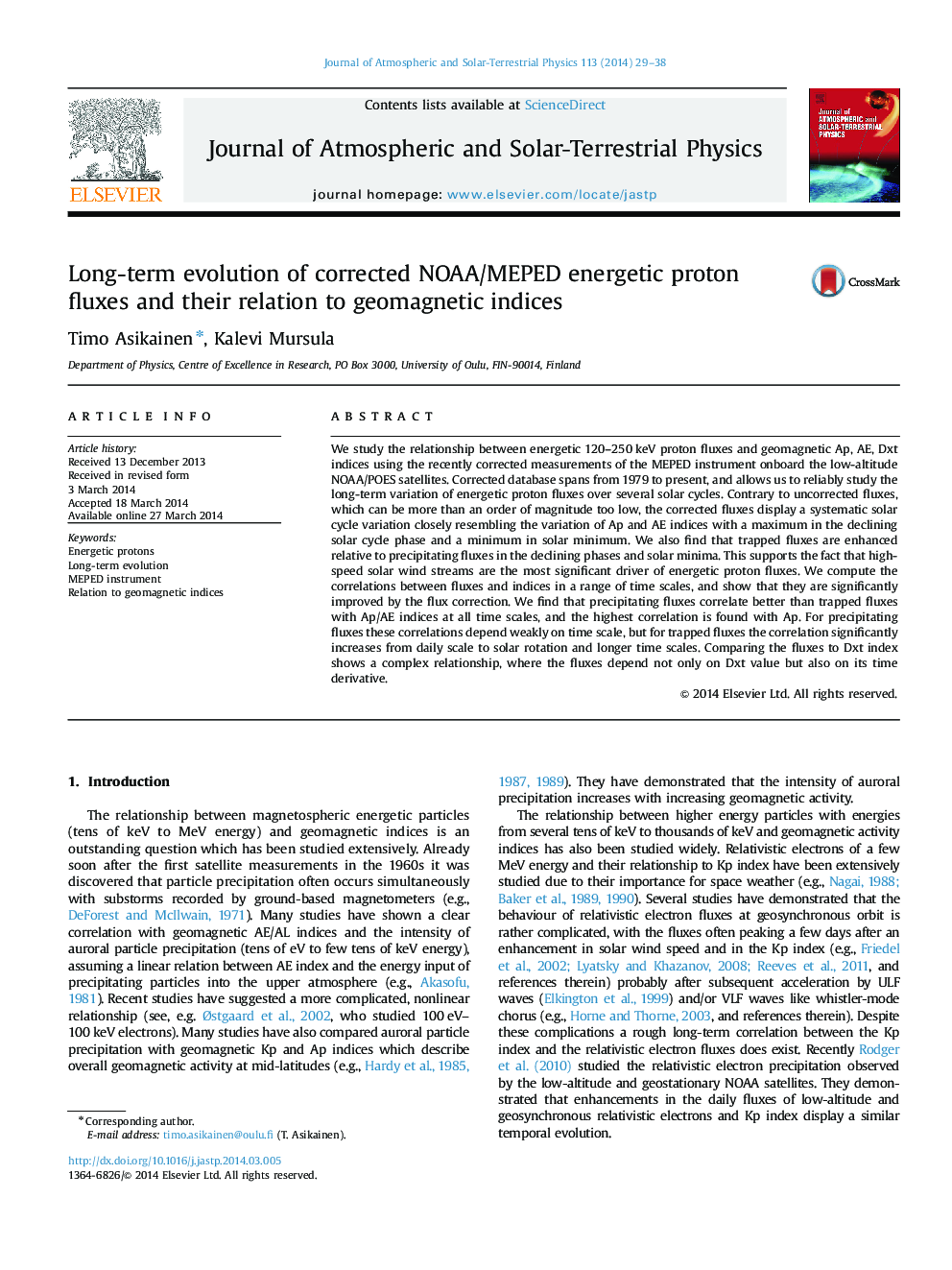| Article ID | Journal | Published Year | Pages | File Type |
|---|---|---|---|---|
| 1776633 | Journal of Atmospheric and Solar-Terrestrial Physics | 2014 | 10 Pages |
•Corrected proton fluxes reveal a systematic solar cycle variation.•High-speed streams are the most significant driver of energetic proton fluxes.•Correction significantly improves correlation between proton fluxes and indices.
We study the relationship between energetic 120–250 keV proton fluxes and geomagnetic Ap, AE, Dxt indices using the recently corrected measurements of the MEPED instrument onboard the low-altitude NOAA/POES satellites. Corrected database spans from 1979 to present, and allows us to reliably study the long-term variation of energetic proton fluxes over several solar cycles. Contrary to uncorrected fluxes, which can be more than an order of magnitude too low, the corrected fluxes display a systematic solar cycle variation closely resembling the variation of Ap and AE indices with a maximum in the declining solar cycle phase and a minimum in solar minimum. We also find that trapped fluxes are enhanced relative to precipitating fluxes in the declining phases and solar minima. This supports the fact that high-speed solar wind streams are the most significant driver of energetic proton fluxes. We compute the correlations between fluxes and indices in a range of time scales, and show that they are significantly improved by the flux correction. We find that precipitating fluxes correlate better than trapped fluxes with Ap/AE indices at all time scales, and the highest correlation is found with Ap. For precipitating fluxes these correlations depend weakly on time scale, but for trapped fluxes the correlation significantly increases from daily scale to solar rotation and longer time scales. Comparing the fluxes to Dxt index shows a complex relationship, where the fluxes depend not only on Dxt value but also on its time derivative.
